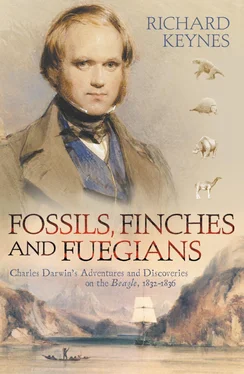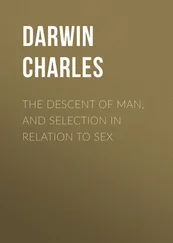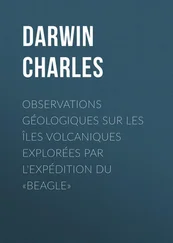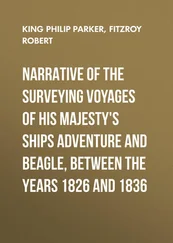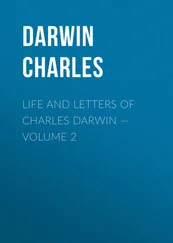The principal and most time-consuming occupation to which Charles was introduced by Fox was collecting and learning to identify beetles. Charles recalled later:
No pursuit at Cambridge was followed with nearly so much eagerness or gave me so much pleasure as collecting beetles. It was the mere passion for collecting, for I did not dissect them and rarely compared their characters with published descriptions, but got them named anyhow. I will give a proof of my zeal: one day, on tearing off some old bark, I saw two rare beetles and seized one in each hand; then I saw a third and new kind, which I could not bear to lose, so that I popped the one which I held in my right hand into my mouth. Alas it ejected some intensely acrid fluid, which burnt my tongue so that I was forced to spit the beetle out, which was lost, as well as the third one. I was very successful in collecting and invented two new methods; I employed a labourer to scrape during the winter, moss off old trees and place [it] in a large bag, and likewise to collect the rubbish at the bottom of the barges in which reeds are brought from the fens, and thus I got some very rare species. No poet ever felt more delight at seeing his first poem published than I did at seeing in Stephen’s Illustrations of British Insects the magic words, “captured by Charles Darwin, Esq.” 25
Public interest in natural history was at that time about to expand hugely, but few people pursued the new hobby with the passion, practical competence and competitiveness displayed by Fox and Charles. After breakfasting together daily, they scoured the fields and ditches closest to them at the ‘backs’ of the colleges, and the countryside further to the south of Cambridge, often accompanied by a bagman to carry their heavier equipment and their captures. When this man had learnt just what they were after, he would also collect for them when they were otherwise occupied. Returning to Charles’s rooms they would go through his reference books, from Lamarck to Stephens, to identify any rarities they had secured, and pin them out on a board for all to admire. On one such occasion after Charles had, after a ‘famous chace’ in the Fens, caught an especially rare beetle, he was pleased when Leonard Jenyns, vicar of Swaffham Bulbeck, and one of his principal collecting rivals in Cambridge, quickly came round to inspect it. Some years later, it was Jenyns who identified the fishes brought back by Charles in the Beagle .
When in June 1828 Fox went down from Cambridge, Charles felt himself ‘dying by inches, from not having any body to talk to about insects’. During the next three years, before the departure of the Beagle , he and Fox exchanged frequent letters, mainly concerned with entomology. They corresponded regularly during the voyage, and continued to keep closely in touch on family matters until Fox’s death in 1880. On sending Fox a copy of The Descent of Man in 1870, in which he had finally faced up to bringing Man into the picture, Charles added: ‘It is very delightful to me to hear that you, my very old friend, like my other books.’
In the summer of 1828 Charles and a number of friends went to Barmouth on the coast of Wales as a reading party that was intended to brush up their mathematics, but in the event became more concerned with entomology. Even the unfortunate Herbert, who was severely lame thanks to a deformed foot, was dragged to the tops of the hills in search of beetles, though Charles made up for it by helping to carry him down. The enthusiasm and thoroughness with which Charles pursued his beetles had already become a legend among his contemporaries.
At the beginning of the Michaelmas term, Charles moved into the rooms at Christ’s in which he lived for the next three years. A former occupant of the set had been the eighteenth-century theologian William Paley (1743–1805). Perhaps his influence still lingered there, for although Charles devoted very little of his time to theology, he said afterwards that he had greatly appreciated the clarity of Paley’s language and the strength of his logic, and regarded his books on Evidences of Christianity and Moral Philosophy as the only part of the academic course which had helped to educate his mind. However, he now had plenty else to do, for he kept a horse in Cambridge for riding, and having persuaded his father and sisters to provide the funds for a powerful double-barrelled gun with percussion caps, could practise aiming it at a lighted candle in his rooms. His beetles were never neglected, and towards the end of his period in Cambridge he took up once more the study of the inner workings of living cells by microscopy that he had begun in Edinburgh with Robert Grant. This was made possible by a gift from a generous and initially anonymous donor, who later turned out to be Herbert, of the latest compound microscope designed by Henry Coddington, a mathematics tutor at Trinity.
Unquestionably the most important event in Charles’s life while he was at Cambridge was his friendship with the Revd Professor John Stevens Henslow, of whom he had been told by his brother Erasmus, and to one of whose Friday evening soirées for scientifically inclined undergraduates and dons he was taken by Fox in 1828. Henslow had first been Professor of Mineralogy in Cambridge for five years, and then became Professor of Botany from 1827 to 1861. He and Adam Sedgwick, the Revd Professor of Geology and Senior Proctor in the University, had founded the Cambridge Philosophical Society in 1819. Together with William Whewell, polymath and later Master of Trinity, Charles Babbage, the designer of calculating engines, and George Peacock, mathematician and Professor of Astronomy, Sedgwick and Henslow were the leading figures in the development of scientific research and teaching in the university during the first half of the nineteenth century. Henslow’s wide-ranging lectures on botany, covering every aspect of the chemistry and biology of plants as well as the essential minimum of their taxonomic classification by Linnaeus, were attended annually by sixty or seventy undergraduates and several professors. The courses included field excursions, sometimes on foot or else in stagecoaches or on a barge drifting down the river to Ely, punctuated by talks on the variety of plants, insects, shells and fossils that had been collected. In the late spring there was always a trip to Gamlingay heath, twenty miles to the west of Cambridge, where rare plants and animals were to be found, and which ended with a convivial social gathering at a country inn. Charles signed up for these activities in 1829, 1830 and 1831. With at least some of Sedgwick’s lectures that he also attended in 1831, they constituted the only formal instruction in science that he received at Cambridge.
Speaking of the last two terms at the university after he had passed his Bachelor of Arts examination in January 1831, tenth in the list of candidates who did not seek honours, Charles wrote of Henslow in his Autobiography :
I took long walks with him on most days, so that I was called by some of the dons ‘the man who walks with Henslow’; and in the evening I was very often asked to join his family dinner. His knowledge was great in botany, entomology, chemistry, mineralogy, and geology. His strongest taste was to draw conclusions from long-continued minute observations. His judgement was excellent, and his whole mind well-balanced; but I do not suppose that anyone would say that he possessed much original genius.
It is true that by modern standards Charles would not be regarded as having had an orthodox or adequate scientific training. But by the standards of 1831, and remembering the contacts with Grant and the lectures that he had attended in Edinburgh, he was by then as well educated in natural history as any student in the country. And although he had not passed any exams in the subject, he had greatly impressed some of the most eminent scientists in Cambridge with his practical ability as a collector, and with the high quality and purposefulness of his enquiring mind. ‘What a fellow that Darwin is for asking questions,’ said Henslow.
Читать дальше
